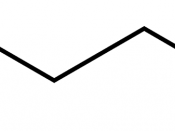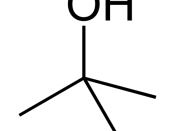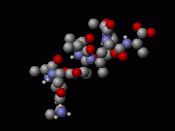Chemistry coursework
My aim is to find the molar heat of combustion of ethanol, propanol and butanol .I will also be comparing the experimental molar heat of combustion with the theoretical, using bound enthalpy's.
Background information
I have found some information that will help me with my experiment. This text is all from www.webchem.net
The complete combustion of propane can be represented by the following equation:
or we could redraw it to represent the bonds present:
We now need to work out how many of each bond type we have broken.
8xC-H
2xC-C
5xO=O
And then how many bonds have been formed!
6xC=O
8xH-O
So using data tables we can look up then average bond enthalpies from, and calculate the enthalpy change of the reaction.
Bond TypeAverage bond enthalpy /kJ mol-1
C-H+413
C-C+347
O=O+498
C=O+805
H-O+464
Notice they are all endothermic.
So we can now do the sum, remember, sum of bonds broken - sum of bonds formed.
DHrð= [(8x413)+(2x347)+(5x498)] - [(6x805)+(8x464)]
= - 2054 kJ mol-1 The value for the enthalpy of combustion of propane from the data table is -2219kJ mol-1.
This apparent error is due to fact that we use Average Bond Enthalpies in our calculations and the fact that the values above relate to the gaseous state, while the standard combustion state of water is liquid. If we allow for this, we get a value of -2226 kJ mol-1 which is pretty close to the value obtained above. The remaining difference must be down to the average bond enthalpy factor.
Preliminary experiments
I will use trial experiments to find the optimum conditions to make sure the test is fair. From an experiment I have done in a previous year I know that a copper calorimeter is the most suitable container to use compared to...


